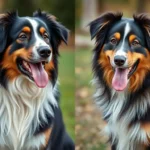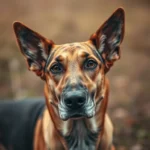
Introduction
Scent hounds are a group of dog breeds known for their exceptional sense of smell and tracking abilities. These dogs are specifically bred for their olfactory prowess, making them indispensable in various roles such as hunting, search and rescue, and even companionship. In this article, we will explore the fascinating world of scent hounds, delving into their characteristics, history, popular breeds, and the significant roles they play in society.
By the end of this comprehensive guide, you will gain a deeper understanding of scent hounds, their unique traits, and how they fit into the lives of families and professionals alike.
Understanding Scent Hounds
What Are Scent Hounds?
Scent hounds are defined by their keen sense of smell, which is often several times more powerful than that of humans. These breeds typically have long, droopy ears and a well-developed sense of olfaction, allowing them to track scents over long distances.
Some key characteristics of scent hounds include:
- Physical Traits: They usually possess a strong, muscular build, with a broad head and long, hanging ears that help capture scents from the ground.
- Sense of Smell: Scent hounds have a highly developed olfactory system with an abundance of scent receptors, making them exceptional at tracking.
The History of Scent Hounds
The history of scent hounds can be traced back thousands of years. These dogs were originally bred for hunting purposes, with their tracking abilities being harnessed to locate game.
- Origin: Many scent hound breeds have roots in ancient civilizations, where they were utilized for hunting wild game.
- Evolution: As societies evolved, the roles of scent hounds expanded beyond hunting to include search and rescue, law enforcement, and even companionship.
Key Traits of Scent Hounds
Understanding the key traits of scent hounds can help potential owners determine if these dogs are a good fit for their lifestyle.
- Temperament and Behavior: Scent hounds are generally friendly, curious, and social. They thrive on companionship and can be quite affectionate.
- Energy Levels and Exercise Requirements: Due to their hunting background, scent hounds usually require regular exercise and mental stimulation. Daily walks and playtime are essential for their well-being.
- Trainability and Intelligence: While scent hounds are intelligent, they can sometimes be stubborn. Positive reinforcement methods work best when training these breeds.
Popular Scent Hound Breeds
Beagle
The Beagle is one of the most recognized scent hounds, known for its friendly disposition and keen sense of smell.
- Overview and History: Beagles were originally bred for hunting small game like rabbits. Their tracking ability and eagerness to please make them popular pets.
- Common Traits and Personality: Beagles are curious, playful, and friendly. They are excellent with children and other pets, making them great family dogs.
- Health Considerations: Beagles are prone to obesity, ear infections, and certain genetic conditions. Regular veterinary check-ups and a balanced diet are essential.
Bloodhound
The Bloodhound is famous for its incredible tracking skills and has been used in various law enforcement roles.
- Unique Characteristics and Skills: Bloodhounds have an unmatched sense of smell and are capable of following a scent trail that is days old.
- Famous Uses in Law Enforcement: Their ability to track criminals has made them invaluable in police work, often featured in search and rescue operations.
- Care and Maintenance Needs: Bloodhounds require regular grooming due to their loose skin and ears, which can be prone to infections.
Basset Hound
Basset Hounds are known for their distinctive appearance and laid-back temperament.
- Distinct Appearance and Temperament: With their short legs and long ears, Basset Hounds are both adorable and endearing. They are gentle, affectionate, and great with children.
- Adaptability in Family Settings: Basset Hounds can adapt well to family life and are generally calm, making them suitable for apartment living.
- Grooming and Health Issues: Regular grooming is necessary to manage shedding, and they can be prone to obesity and certain genetic disorders.
Coonhound
Coonhounds are versatile scent hounds known for their hunting capabilities and energetic nature.
- Types of Coonhounds: The most common types include Black and Tan, Redbone, and Bluetick, each with unique traits and hunting styles.
- Hunting Capabilities and Energy Levels: Coonhounds are highly energetic and require substantial exercise. They excel in tracking and can hunt various game.
- Socialization and Training Tips: Early socialization and consistent training are crucial to managing their energy and ensuring they develop into well-rounded companions.
Foxhound
Foxhounds, including American and English varieties, have a rich history in hunting.
- American vs. English Foxhound: While both breeds are excellent hunters, American Foxhounds are generally more energetic, while English Foxhounds are known for their stamina.
- Historical Significance and Current Roles: Traditionally used in fox hunting, these breeds have adapted to various roles, including being family pets.
- Lifestyle Compatibility: Foxhounds require ample exercise and thrive in active households.
The Role of Scent Hounds in Society
Hunting and Sporting Uses
Scent hounds maintain a significant role in modern hunting. Their ability to track scents helps hunters locate game effectively.
- How Scent Hounds Are Used in Modern Hunting: Different breeds have specialized techniques for hunting specific types of game, such as tracking, flushing, or retrieving.
- Differences in Techniques Between Breeds: For instance, Beagles are often used for small game, while Bloodhounds are more suited for tracking larger animals or lost individuals.
Search and Rescue Operations
Scent hounds excel in search and rescue missions, where their tracking abilities can be a lifesaver.
- Scent Hounds in Disaster Response: Many organizations utilize scent hounds to locate missing persons in disaster-stricken areas.
- Training for Search and Rescue Tasks: These dogs undergo specialized training to enhance their tracking skills in various environments.
Scent Detection in Law Enforcement
The role of scent hounds in law enforcement, particularly Bloodhounds, cannot be overstated.
- Role of Bloodhounds in Criminal Investigations: Their tracking skills are invaluable during investigations, helping law enforcement locate suspects or missing persons.
- Applications in Drug Detection: Scent hounds are also used to detect drugs and explosives, showcasing their versatility and reliability.
Training and Care for Scent Hounds
Basic Training Techniques
Training scent hounds requires patience and consistency.
- Importance of Obedience Training: Basic obedience is essential to ensure that scent hounds can be controlled in various situations.
- Effective Commands and Training Methods: Positive reinforcement methods, such as treats and praise, are particularly effective for these intelligent breeds.
Socialization Needs
Socialization plays a crucial role in the development of scent hounds.
- Why Socialization is Crucial: Early exposure to different environments, people, and other pets helps prevent behavioral issues later in life.
- Tips for Socializing Your Scent Hound: Gradually introduce your dog to various experiences and reward positive interactions to foster confidence.
Health and Nutrition
Proper health care and nutrition are vital for the well-being of scent hounds.
- Common Health Issues to Watch For: Some breeds may be prone to specific conditions, such as hip dysplasia or ear infections, so regular veterinary check-ups are essential.
- Dietary Needs and Recommendations: A balanced diet, tailored to the breed’s energy level and age, is crucial for maintaining health.
Choosing the Right Scent Hound for You
Lifestyle Considerations
When selecting a scent hound, it’s essential to consider your lifestyle.
- Assessing Your Home Environment and Activity Level: Determine how much space you have and how active your household is. Some scent hounds need more exercise than others.
- Compatibility with Children and Other Pets: Most scent hounds are friendly, but it’s essential to assess their compatibility with your family dynamics.
Adoption vs. Breeding
Deciding between adopting or purchasing a scent hound can significantly impact your experience as a dog owner.
- Advantages of Adopting a Scent Hound: Many rescues are in need of loving homes, and adopting a dog can be a fulfilling option.
- Things to Consider When Selecting a Breeder: If you choose to buy from a breeder, ensure they are reputable and prioritize the health and well-being of their dogs.
Resources for Potential Owners
Several resources can assist potential scent hound owners in their journey.
- Recommended Books and Websites for Further Reading: Numerous books and online resources provide valuable information on training, health, and breed specifics.
- Local Rescue Organizations and Breed Clubs: Connecting with local groups can offer support and guidance in finding the right scent hound for your home.
Conclusion
In summary, scent hounds are remarkable dogs that offer versatility, companionship, and essential roles in society. Their incredible sense of smell and friendly nature make them unique pets for families and professionals alike.
As you consider bringing a scent hound into your life, remember the importance of responsible ownership and care. These dogs are not only companions but also loyal friends that enrich our lives in countless ways. Whether you are looking for a hunting partner, a rescue worker, or a loving family pet, a scent hound may just be the perfect fit for you.
References
- Comprehensive sources and literature on scent hounds and dog breeds.









